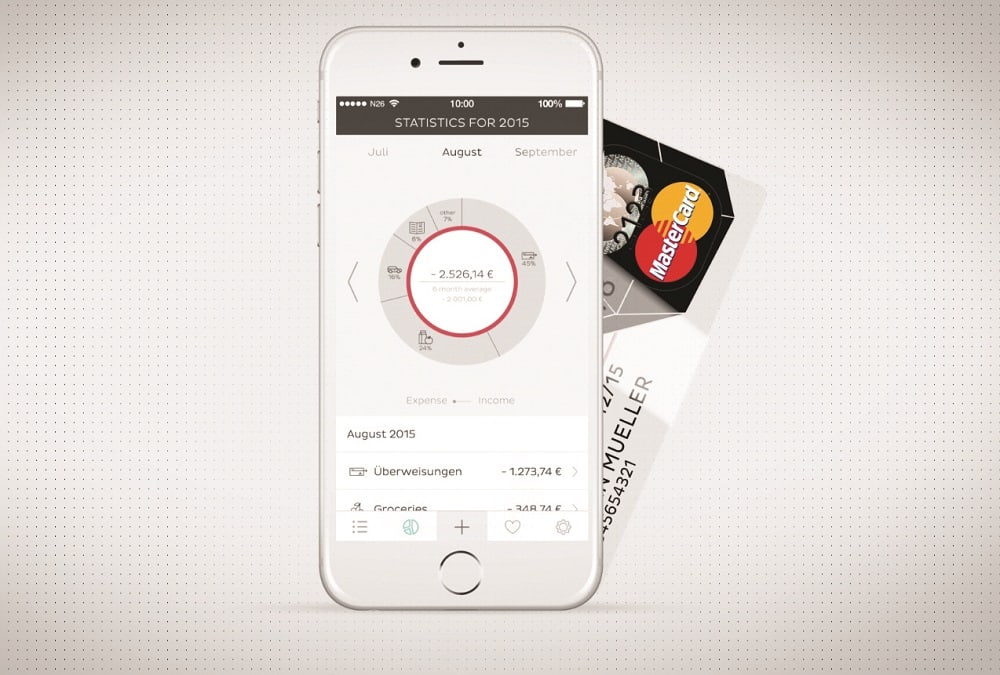Technology is changing the world of personal finance. Have you caught up yet, asks Ross Curran?
We live in a world of constantly changing landscapes, where personal and business communications are vastly different from what they were even 10 years ago.
Social media has changed marketing and PR methods beyond recognition, and the permeation of technology into our lives shows no signs of abating. In fact, with the emergence of the Internet of Things, it looks like we’re heading for a brand new rollercoaster of innovation.
And then there’s the world of personal finance. In Ireland, we seem content to remain in the 90s when it comes to the use of technology in how we manage our money.
The cries of objection as the banks reduce the personal touch from their branches, shows how entrenched we are in our views and perception of how relationships with financial institutions should be.
While we can bank online with our phones, the hoops that need to be broken in order to fulfil anything but the most mundane of tasks, means that most of us simply use ours to purely view balances, transfer funds and manage standing orders or direct debits.
For business users, the challenge is even greater. As a long-term user of a business online system, it was a relief to see it updated this year, finally looking fit for purpose. And yet it doesn’t work on Chrome. Just let that sink in for a moment: the browser most used on laptops and desktops in the country (Safari is obviously used most on ‘devices’) doesn’t allow you work with the most common online banking system.
It would be laughable if it wasn’t so frustrating, and demonstrates how resigned we are here to second-rate services from our providers.
In the areas of investing, things aren’t much better. Clients remain stuck in the old ways because there seems little incentive to progress.
In a global marketplace you can see how people in the developed world, and developing regions in many cases, have certain expectations on how their money should be invested. Control, transparency and cost are key factors in deciding where to build a portfolio.
In Ireland, even after the credit crunch and stock/property market collapse, the two most common rationales today for making an investment are that it was what an advisor recommended or that the individual themselves thinks an opportunity is too good to miss.
DIGITAL REVOLUTION
Irish institutions have recently made strides in applying common technologies in how they interact with their customers. Most offer their services through apps across different devices – with varying degrees of commitment, it should be noted – and online facilities are slowly improving.
At the start of 2014, a new initiative to standardise electronic transfers of money was introduced. Known as SEPA (Single Euro Payments Area), the idea was that we could wire funds throughout Europe using a single format – essentially the IBAN and BIC – to replace national sort codes and basic bank account numbers.
The landscape of personal finance is going to look significantly different in five years
There were grumblings about SEPA at its introduction. Conspiracy theorists contended that it was yet another method for a centralised European body – the Central Bank – to regulate and monitor our business.
For many of us, the change to a new account number – though IBAN essentially retained the core information from the old system – was just more numbers to learn.
Since then most of us have seen little change in real terms; however, in the background, a disparate number of financial institutions, some small start-ups and other well established pillar banks, are embracing the opportunities this seemingly technical alteration in banking records affords. Some are available in Ireland and others are coming soon. The incumbents have been warned.
NUMBER 26
Have you opened a bank account recently?
It can take longer than you would think. But recently I managed to open a bank account online in eight minutes without the need to physically visit a branch. Even more surprising, the account was ready to use that day.
Number 26 is a German bank and one of the first pan-European ‘borderless’ banks.
Launched in late 2015, it is now available to Irish consumers, and if you travel a lot, registering should be a priority.
Aside from the ease with which I could set up the account and start making transactions, there are a number of other significant benefits to this account. For frequent travellers, there are no fees for transactions; this includes online purchasing, wireless debit payments in shops or restaurants, and even for ATM withdrawals anywhere in the EU.
Another benefit is that your phone becomes the centre of your banking and transactions are almost instantly updated, and even categorised to your choosing. Should you lose your card, you can put a hold on the account immediately, and if you lose your phone you can log on through their website to do the same.
You should be able to operate the account as you would any other, receiving your salary and making direct debits or standing orders.
Companies are legally obliged to facilitate any EU bank account with an IBAN.
Overall, for a service that is less than a year old, it is a remarkably complete offering, and one that should have our own banks looking nervously over their shoulders as they contemplate their offerings for the future.
Also worth highlighting, if your travels take you further afield than the eurozone, there is a similar service called Revolut. Their USP is the facility to exchange currency at interbank rates (i.e. without any margin being applied). They also provide a MasterCard for physical use but it is not wireless for the moment.
BRANCH BANKING’S FUTURE
Taking a different approach to the new players like Number 26 and Revolut, mBank are a relatively well-established Polish institution that has sought to change how banking interactions are experienced by customers.
Seeing their early technical adoptions being replicated by bigger entrants to their local market, mBank looked to other industries for inspiration on how to improve. They copied Amazon’s realtime product delivery Mint.com for interacting with financial services in a graphical intuitive manner, and Zappos.com for the virtual in-store experience, among many others.
Some of the innovations that mBank offer include integrated money management features in day-to-day banking, video banking as standard, and refined CRM systems for realtime event-driven advice, to mention a few.
It’s interesting to see how certain institutions embrace the opportunities that technology can afford. We’re almost at a point where the actual differences between banking products, be it on the deposit or lending side, of different institutions is becoming negligible. In my opinion, the real battle for the hearts and minds of Irish consumers will be here – at what the ICT industry calls the UX, or user experience.

Ross Curran
NEW WAYS TO INTERACT
It is important to take the opportunity to benchmark your current provider with what is available out there. No doubt there will be a percentage who view this coming ‘revolution’ with horror.
Some financial companies are going to, in the parlance of tech gurus everywhere, disrupt
The absence of real human interaction in any meaningful way by the institutions that hold our money may seem abhorrent, but the truth is that it’s already here.
The decision to use technology in the frontline of personal finance has already been made. So the big question is: how are these institutions going to use it? Competition is coming, internally and from abroad. No doubt some financial companies are going to, in the parlance of tech gurus everywhere, disrupt.
We have a choice of whether to use our digital feet and move or not. Inertia is a terrible thing and in finance it’s almost taken for granted, so perhaps it’s time to let those who are not moving quick enough know that they are in trouble.
One thing is certain: the landscape of personal finance is going to look significantly different in five years to how it looks right now.






